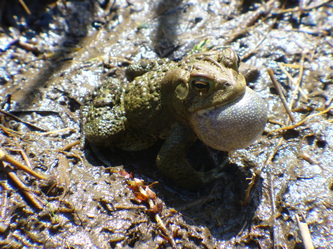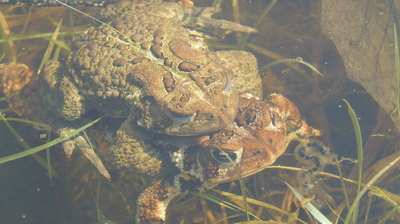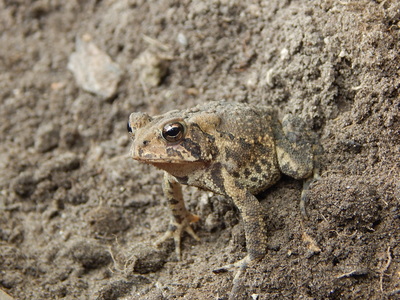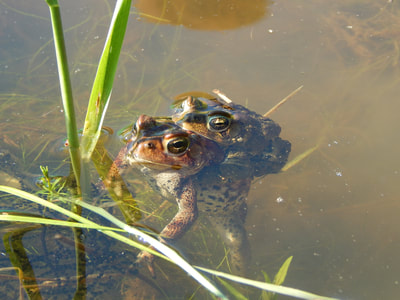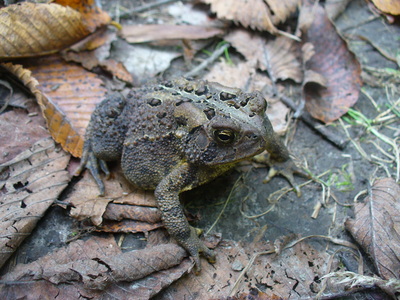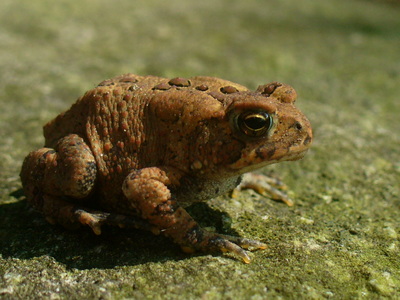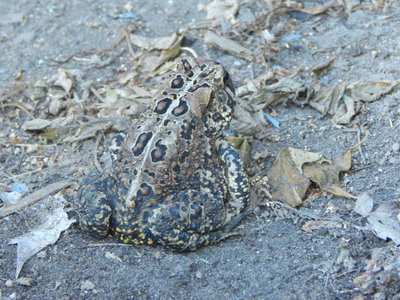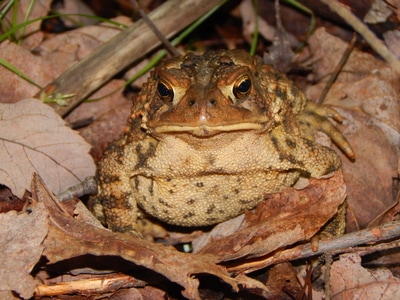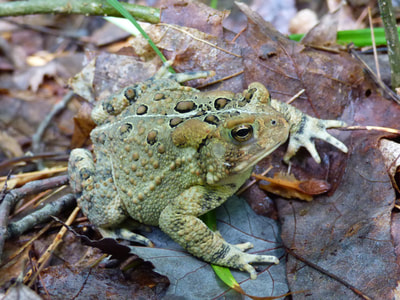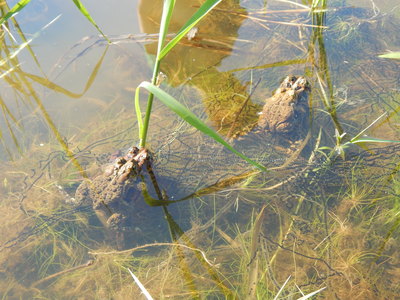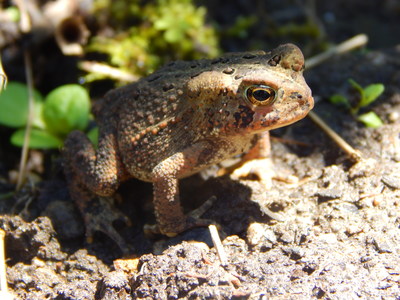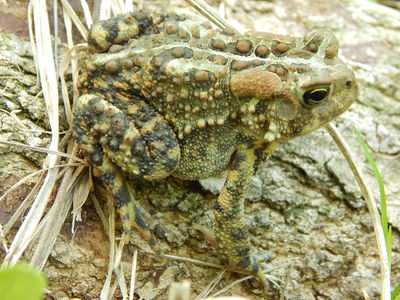American Toad (Anaxyrus americanus)
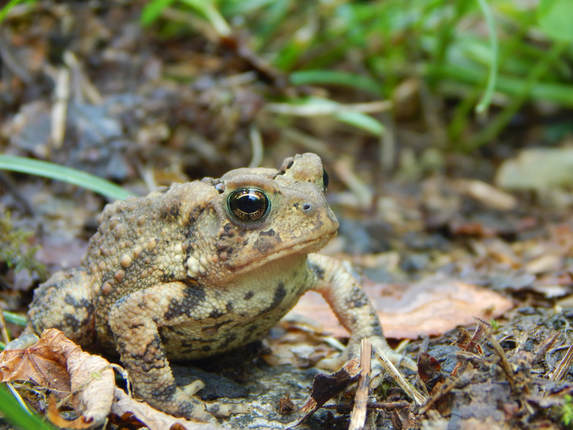
American Toad
Description: The familiar hop toad; they are covered with bumps and patterning, a means of camouflage for the toad in its habitat. American Toads range from brick red to olive green, brown, tan, yellowish and sometimes nearly black. American toads have creamy or yellow bellies which are spotted and marked. Male toads are smaller and have a darker throat. They also have enlarged thumbs enabling them to cling to the female while they are mating. Toads can alter the darkness of there skin to better match their surroundings, but cannot change their base colors.
Eggs: Long single strands of eggs deposited in slow streams, rivers, ponds, ditches and large spring puddles. When the tadpoles hatch they form large schools. Tadpoles quickly develop into toadlets and emerge from the breeding pond.
Call: Long, trill that ascends in the beginning and lowers near the end. Usually heard from May-July. (See video below)
Habitat: American Toads live in moist deciduous and coniferous forests, on wooded hillsides, lawns, and gardens. They typically only occur near water while breeding. Often seen crossing roads on warm, rainy spring nights. Juvenile toads are more likely to be encountered during the day than adults. Sometimes toads will shelter beneath boards, rocks and other debris. Accomplished diggers, toads often rest during the day mostly buried among leaf litter.
Diet: American Toads are nocturnal ambush predators. Their diet is varied and any small prey will do, particularly, beetles, ants, caterpillars, moths, earthworms, millipedes, and spiders. Opportunistic hunters, it would not be extraordinary for a large toad to consume a small frog or young snake. Occasionally stalks prey by creeping up slowly, keeping its body low to the ground. They use their sticky tongue to lash out and incapacitate prey.
Defenses: The American toad uses chemicals in the bumps on its back, especially the largest two to repel predators as it irritates their mouths. For predators such as snakes which are not affected by the repellent chemicals, toads inflate their bodies with air and raise into a defense position to make them difficult or impossible to swallow. A third tactic toads use is camouflage. The protuberances and patterns on the back of a toad render them inconspicuous in forest leaf litter where they regularly rest.
Eggs: Long single strands of eggs deposited in slow streams, rivers, ponds, ditches and large spring puddles. When the tadpoles hatch they form large schools. Tadpoles quickly develop into toadlets and emerge from the breeding pond.
Call: Long, trill that ascends in the beginning and lowers near the end. Usually heard from May-July. (See video below)
Habitat: American Toads live in moist deciduous and coniferous forests, on wooded hillsides, lawns, and gardens. They typically only occur near water while breeding. Often seen crossing roads on warm, rainy spring nights. Juvenile toads are more likely to be encountered during the day than adults. Sometimes toads will shelter beneath boards, rocks and other debris. Accomplished diggers, toads often rest during the day mostly buried among leaf litter.
Diet: American Toads are nocturnal ambush predators. Their diet is varied and any small prey will do, particularly, beetles, ants, caterpillars, moths, earthworms, millipedes, and spiders. Opportunistic hunters, it would not be extraordinary for a large toad to consume a small frog or young snake. Occasionally stalks prey by creeping up slowly, keeping its body low to the ground. They use their sticky tongue to lash out and incapacitate prey.
Defenses: The American toad uses chemicals in the bumps on its back, especially the largest two to repel predators as it irritates their mouths. For predators such as snakes which are not affected by the repellent chemicals, toads inflate their bodies with air and raise into a defense position to make them difficult or impossible to swallow. A third tactic toads use is camouflage. The protuberances and patterns on the back of a toad render them inconspicuous in forest leaf litter where they regularly rest.

